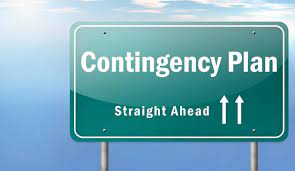Building a Resilient Foundation
Why Contingency Planning Matters
Economic shifts can strike without warning, from market downturns to supply chain disruptions. Contingency planning equips businesses to weather these storms by preparing for the unexpected. A solid plan identifies potential risks and outlines actionable steps to maintain operations, ensuring your business remains agile and competitive. This proactive mindset is critical for long-term stability in an unpredictable economy.
Assessing Vulnerabilities Early
Identifying Risks in Your Operations
The first step in contingency planning is understanding where your business is most vulnerable. Conduct a thorough assessment of your operations, from cash flow dependencies to supply chain reliability. For example, reliance on a single supplier or customer can pose significant risks during economic turbulence. By pinpointing these weak spots, you can develop strategies to diversify revenue streams or secure alternative partners, reducing exposure to sudden shifts.
Strengthening Cash Flow Strategies
Safeguarding Financial Stability
Cash flow is often the first casualty of economic uncertainty. To prepare, create a financial buffer by maintaining a reserve fund or securing flexible credit lines. Regularly stress-test your cash flow projections to anticipate scenarios like delayed payments or reduced demand. These measures ensure your business can cover essential expenses, such as payroll and rent, even when revenue takes a hit.
Diversifying Revenue Streams
Expanding Income Opportunities
Relying on a single product, service, or market can leave your business exposed during economic shifts. Diversification is a powerful contingency tool—consider exploring new markets, developing additional product lines, or offering complementary services. For instance, a retail business might add an e-commerce platform to reach a broader audience. This approach spreads risk and creates new revenue opportunities to offset downturns.
Leveraging Technology for Agility
Streamlining Operations with Digital Tools
Technology plays a pivotal role in contingency planning, enabling businesses to adapt quickly to changing conditions. Invest in cloud-based systems for real-time data access, allowing remote work or rapid decision-making during disruptions. Automation tools can also streamline processes like inventory management or customer communications, reducing costs and improving efficiency when economic pressures mount.
Fostering a Culture of Adaptability
Preparing Your Team for Change
A contingency plan is only as strong as the team executing it. Foster a culture of adaptability by training employees to handle crises and encouraging open communication. Regular scenario planning exercises can prepare your team to respond swiftly to economic shifts, whether it’s pivoting to new markets or adjusting operations. Engaged, well-prepared employees are your greatest asset in navigating uncertainty.
Looking Ahead with Confidence
Building Long-Term Resilience
Contingency planning isn’t a one-time task—it’s an ongoing commitment to resilience. Regularly review and update your plan to reflect new risks, market trends, or operational changes. By staying proactive, your business can not only survive economic shifts but also seize opportunities others overlook. A well-prepared company turns challenges into stepping stones for growth, ensuring long-term success.









